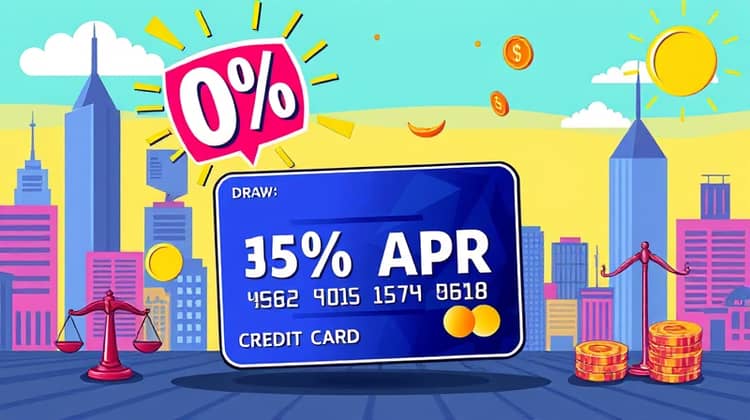Credit Card Terms: 5 Fine Print Details You Can't Afford to Ignore

When it comes to managing personal finances, understanding credit card terms is crucial. Hidden details in the fine print can significantly impact your budgeting and overall financial health. Ignoring these details can lead to higher costs and unexpected debts.
In this article, we will explore five essential elements of credit card agreements that consumers should not overlook. Knowing these factors can help you make informed choices when choosing a credit card that best fits your financial needs.
1. Annual Percentage Rate (APR)

The Annual Percentage Rate (APR) is one of the most critical pieces of information in your credit card agreement. It represents the yearly interest rate charged on balances you carry on your card. Understanding the APR can help you gauge how much you’ll be paying in interest if you don’t pay off your balance in full each month.
Many credit cards come with variable APRs that can change based on market conditions or your credit score. This means that even if you start with a low rate, it can increase, resulting in higher costs over time if you carry a balance.
2. Introductory and Promotional Rates

Some credit cards offer enticing introductory or promotional rates to attract new customers. These promotions may include 0% APR for a limited time on purchases or balance transfers, providing a significant advantage for managing expenses and debt.
While promotional rates can be advantageous, they are often temporary and can revert to a much higher APR after the promotional period ends. It's essential to read the terms carefully to know when your rate will change.
- Always check the duration of the promotional rate.
- Understand what the APR will revert to after the promo period ends.
- Look out for any qualifying criteria that may apply.
Being aware of these details allows you to maximize the benefits of promotional offers while avoiding surprises later on.
3. Fees: Hidden Costs That Add Up

Credit cards can have various fees that can quickly add up and eat into your budget. Common fees include annual fees, late payment fees, foreign transaction fees, and cash advance fees. Some cards may lure you in with no annual fee only to charge you for foreign transactions, which can add to your costs if you travel frequently.
The problem is that many consumers may overlook these fees when comparing credit cards, focusing solely on the interest rates or rewards offered. However, fees can significantly affect the true cost of using your card.
- Annual fees can add up to a significant amount over time.
- Late payment fees can drastically increase your balance.
- Foreign transaction fees can surprise you when using your card abroad.
- Cash advance fees can start accumulating interest immediately.
Being informed about potential fees enables you to choose a credit card that minimizes costs, ultimately saving you money in the long run.
4. Grace Periods: The Interest-Free Window

A grace period is the time frame during which you can pay off your balance without incurring interest charges. Typically, this period lasts from the end of your billing cycle to the payment due date, usually around 21 to 25 days. Understanding the grace period can help you avoid interest on purchases made with your credit card.
However, it's essential to know that if you carry a balance from one month to the next, you may not have a grace period on new purchases, and interest will start accruing immediately.
5. Rewards and Cash Back: Understand the Trade-Offs

While many credit cards offer rewards programs that promise cash back, travel points, and other enticing benefits, it's important to dig deeper into these offers. Sometimes, higher rewards rates can come with higher fees or APRs, which can diminish the overall benefit of using the card.
Moreover, specific spending requirements might be needed to earn rewards, or your point accumulation may not translate into immediate savings. Carefully consider how you spend to ensure you truly benefit from these rewards.
Conclusion

Navigating the world of credit cards can be overwhelming, especially with the fine print often laden with jargon and complex details. However, understanding these essential terms can empower you to make better financial decisions and avoid costly pitfalls.
By paying attention to details such as the Annual Percentage Rate (APR), fees, grace periods, and rewards programs, you can find a credit card that aligns with your financial goals. This understanding not only helps in selecting the right card but also aids in utilizing it effectively without falling into debt traps.
Finally, remember that informed consumers can make choices that lead to a healthier financial future. Take the time to read the fine print and weigh your options carefully.






